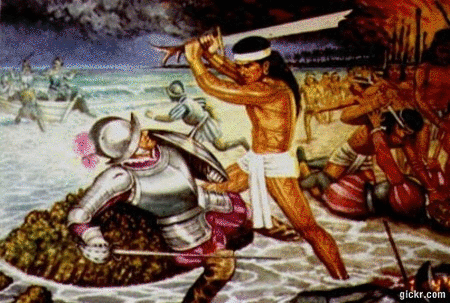
The City of Cebu is the capital city of Cebu and the second city in the Philippines, the second most significant metropolitan centre in the Philippines and known as the oldest city established by the Spaniards in the country.
The city is located on the eastern shore of Cebu and was the first Spanish settlement in the Philippines. Cebu is the Philippines' main domestic shipping port and is home to about 80% of the country's domestic shipping companies. Cebu also holds the second largest international flights in the Philippines and is a significant centre of commerce, trade and industry in the Visayas and Mindanao region. According to the 2007 Philippine census, the city has a population of about 798,809 people.
Cebu City is the centre of a metropolitan area called Metro Cebu, which includes the cities of Mandaue, Lapu-Lapu and Talisay. Metro Cebu has a total population of about 2 million people. The Mactan-Cebu International Airport, located in Lapu-Lapu City is only a twenty-minute drive away from Cebu City. To the northeast of the city are Mandaue City and the town of Consolacion, to the west are Toledo City, the towns of Balamban and Asturias, to the south are Talisay City and the town of Minglanilla. Across Mactan Strait to the east is Mactan Island where Lapu-Lapu City and an aquarium attraction are located.
In the 16th century, Cebu City was an area part of the Rajahnate of Cebu with an Islamic, Hindu and Animist populations. On April 7, 1521, Portuguese explorer Ferdinand Magellan landed in Cebu. He was welcomed by Rajah Humabon, the King of Cebu, who together with his wife and about 700 native islanders, were baptized by the Spaniards on April 14, 1521. Magellan, however, failed to successfully claim the Philippines for the crown of Spain, having been killed by Datu Lapu-Lapu, a king in Mactan Island on April 27, 1521 in the Battle of Mactan. On April 27, 1565, Spain colonized the area with the arrival of Spanish explorers led by Miguel López de Legazpi, together with Augustinian Friar Andrés de Urdaneta, sailing from Mexico, arrived in Cebu. The Spaniards established settlements, trade flourished and renamed the city on January 1, 1571, from San Miguel (Saint Michael) to Villa del Santísimo Nombre de Jesús (Village of the Most Holy Name of Jesus). During this six year period of exploration and settlements by the Spaniards, Cebu City was the capital of the Spanish East Indies. In 1898, the city was ceded to the United States after the Spanish-American War and Philippine-American War. In 1901, the city was governed by the United States for a brief period, however it attained the status of a charter city in 1936 and was governed independently by Filipino politicians. Following the end of the Japanese occupation in World War II, the city gained independence from colonial rule in 1946 as part of the Republic of the Philippines.
Culture of Cebu
Procession during the Feast Day of the Santo Niño.
Cebu City is a significant cultural centre in the Philippines. The city's most famous landmark is Magellan's Cross. This cross, now housed in a chapel, is reputed to have been planted by Ferdinand Magellan when he arrived in the Philippines in 1521. It was encased in hollow tindalo wood in 1835 upon the order of the Augustinian Bishop Santos Gómez Marañon to prevent devotees from taking it home chip by chip. The same bishop restored the present template or kiosk, located at the present Magallanes street between the City Hall and Colegio del Santo Niño. Revered by Filipinos, the Magellan's Cross is a symbol of Christianity in the Philippines.
A few steps away from the Magellan's Cross is the Basilica Minore del Santo Niño (Church of the Holy Child). This is an Augustinian church elevated to the rank of Basilica in 1965 during the 400th year celebrations of Christianity in the Philippines, held in Cebu. The church, which was the first to be established in the islands, is built of hewn stone and features the country's oldest relic, the figure of the Santo Niño de Cebu (Holy Child of Cebu).
This religious event is celebrated during the island's cultural festivities known as the Sinulog festival. Held every third Sunday of January, it celebrates the festival of the Santo Niño, who was formerly considered to be the patron saint of Cebu. (This patronage was later changed to that of Our Lady of Guadalupe after it was realised that the St. Nino could not be a patron saint because he was an image of the Christ and not a saint.) The Sinulog is a dance ritual of pre-Hispanic indigenous origin. The dancer moves two steps forward and one step backward to the rhythmic sound of drums. This movement resembles somewhat the current (sulog) of the river. Thus, the Cebuanos called it Sinulog.
When the Spaniards arrived in Cebu, the Italian chronicler, Antonio Pigafetta, sailing under convoy with the Magellan expedition, offered a baptismal gift to Hara Amihan, wife of Rajah Humabon. She was later named Juana, the figure of the Santo Niño. The natives also honored the Santo Niño de Cebu in their indigenous Sinulog ritual. The Sinulog ritual was preserved but limited to honoring the Santo Niño. Once the Santo Niño church was built in the 16th century, the Christian Malay people started performing the Sinulog ritual in front of the church, the devotees offering candles and indigenous dancers shouting "Viva Pit Señor!" (Hail Mister).
In the 1980s and 2000s, the city authorities of Cebu added the religious feast of Santo Niño de Cebú during the Sinulog Festival to its cultural event.
(From Wikipedia, the free encyclopedia)



0 comments on "Cebu City"
Post a Comment
Thank you for visiting Cebu Event and Tours hope you enjoy...^^